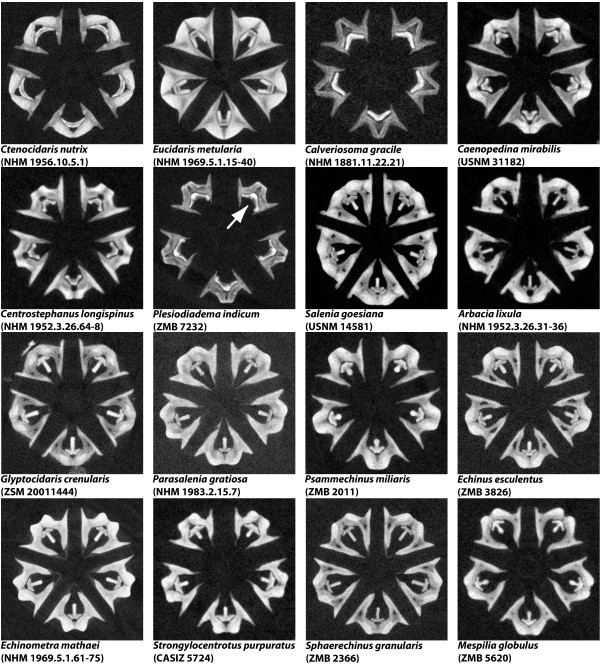Figure 2.
Virtual horizontal μCT sections through Aristotle's lantern, the sea urchin feeding apparatus - phylogenetically representative selection of 16 out of almost 80 sea urchin species scanned by us using μCT (individual isotropic dataset resolutions ranging from 9 - 24 μm). The arrow depicts an asymmetrical tooth in Plesiodiadema indicum (Aspidodiadematidae). μCT was carried out at the GKSS outstation on the DESY site in Hamburg, Germany using an X-ray tube tomography system (GE Sensing & Inspection Technologies, Wunstorf, Germany). Image processing was carried out using Amira 5.2 (Visage Imaging GmbH, Berlin, Germany). The ~20-25 GB large raw image datasets were analyzed on a standard office PC using a remote visualization software environment (HP Remote Graphics Receiver 5.3.0: Hewlett-Packard Development Company, Palo Alto, USA). The office PC was connected via Internet (100 Mbit/s) to an HP XC/SVA visualization cluster (1× HP ProLiant DL785 with 32 AMD cores/256 GB RAM, and 8× HP xw8600 workstations, all equipped with dual NVIDIA Quadro FX5600 GPUs) at the Zuse Institute Berlin, Germany. Not to scale.

